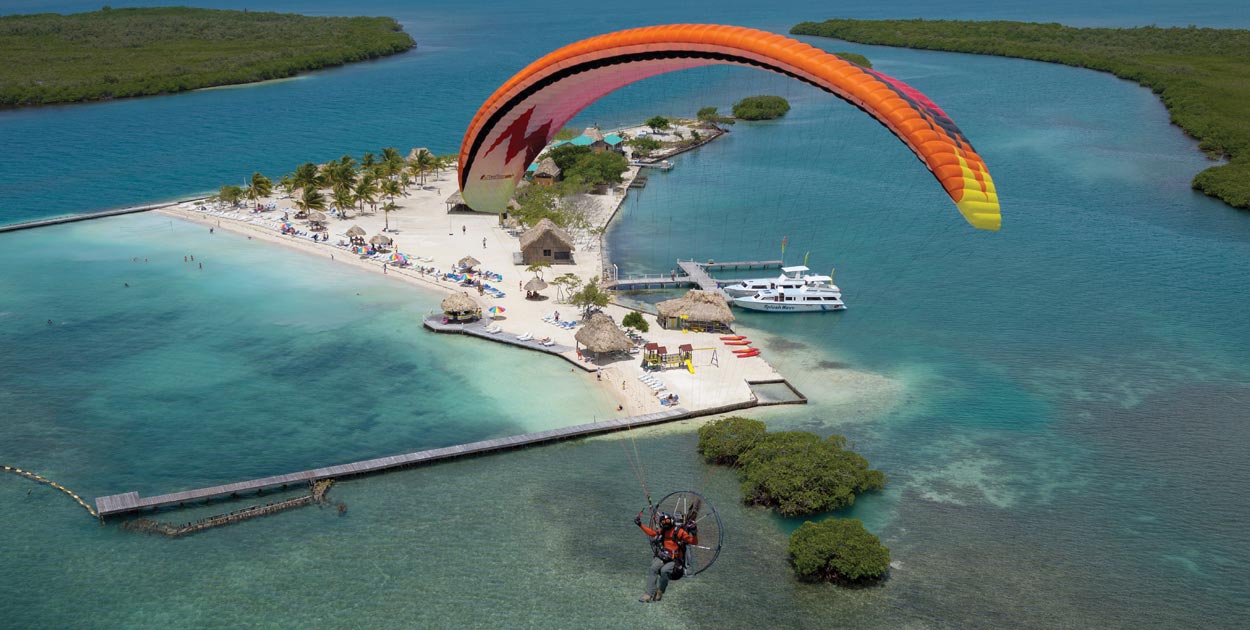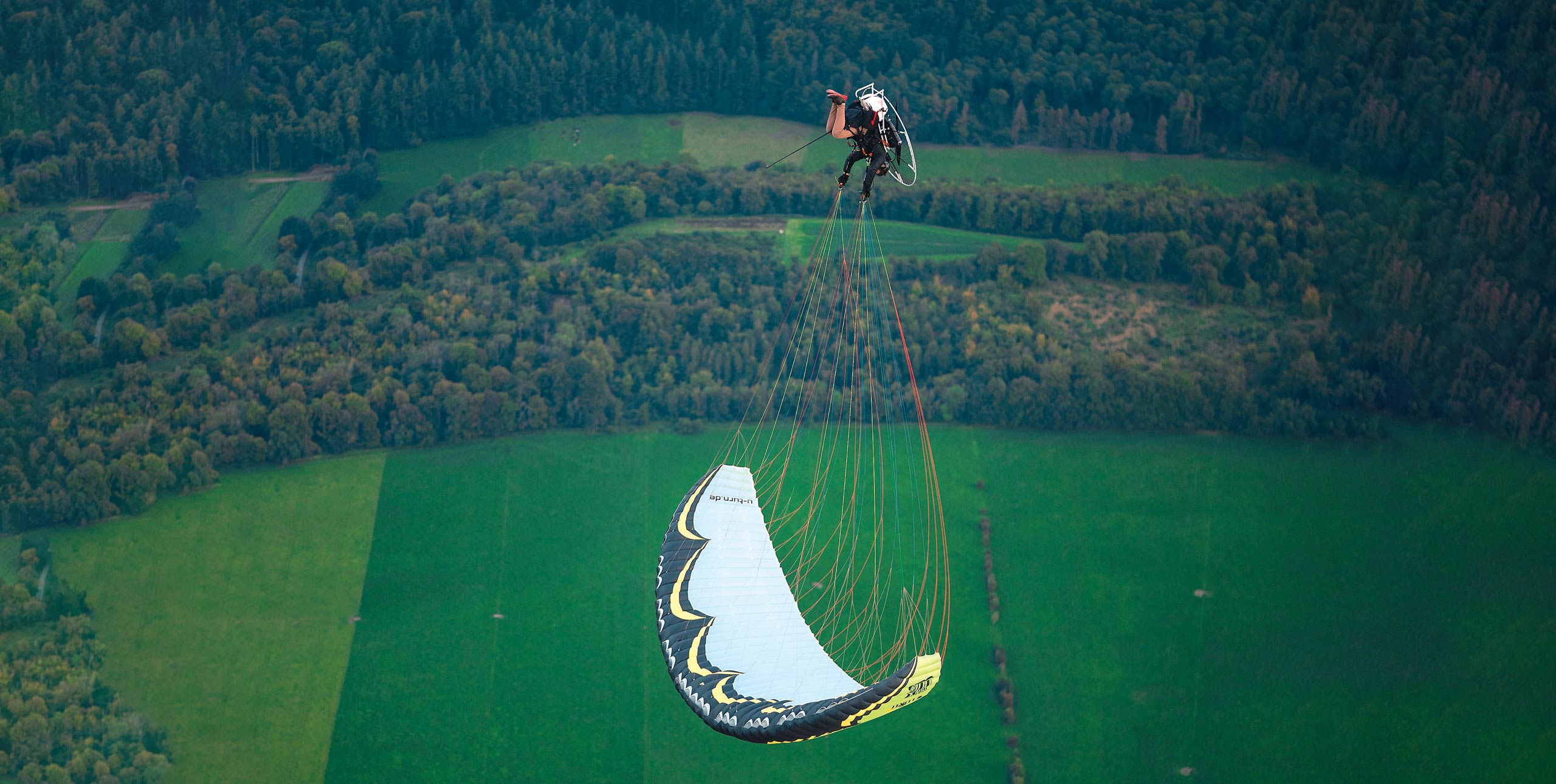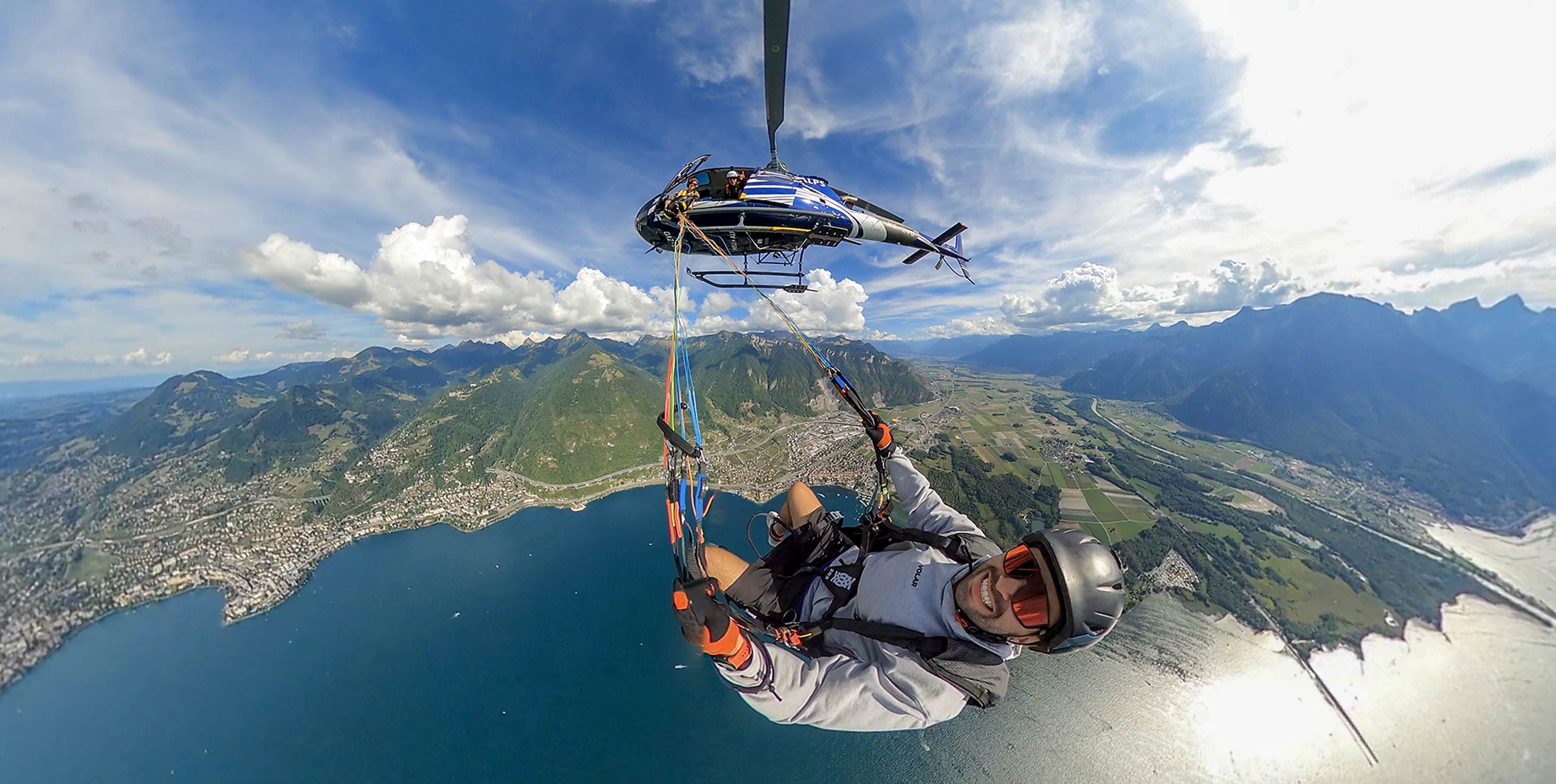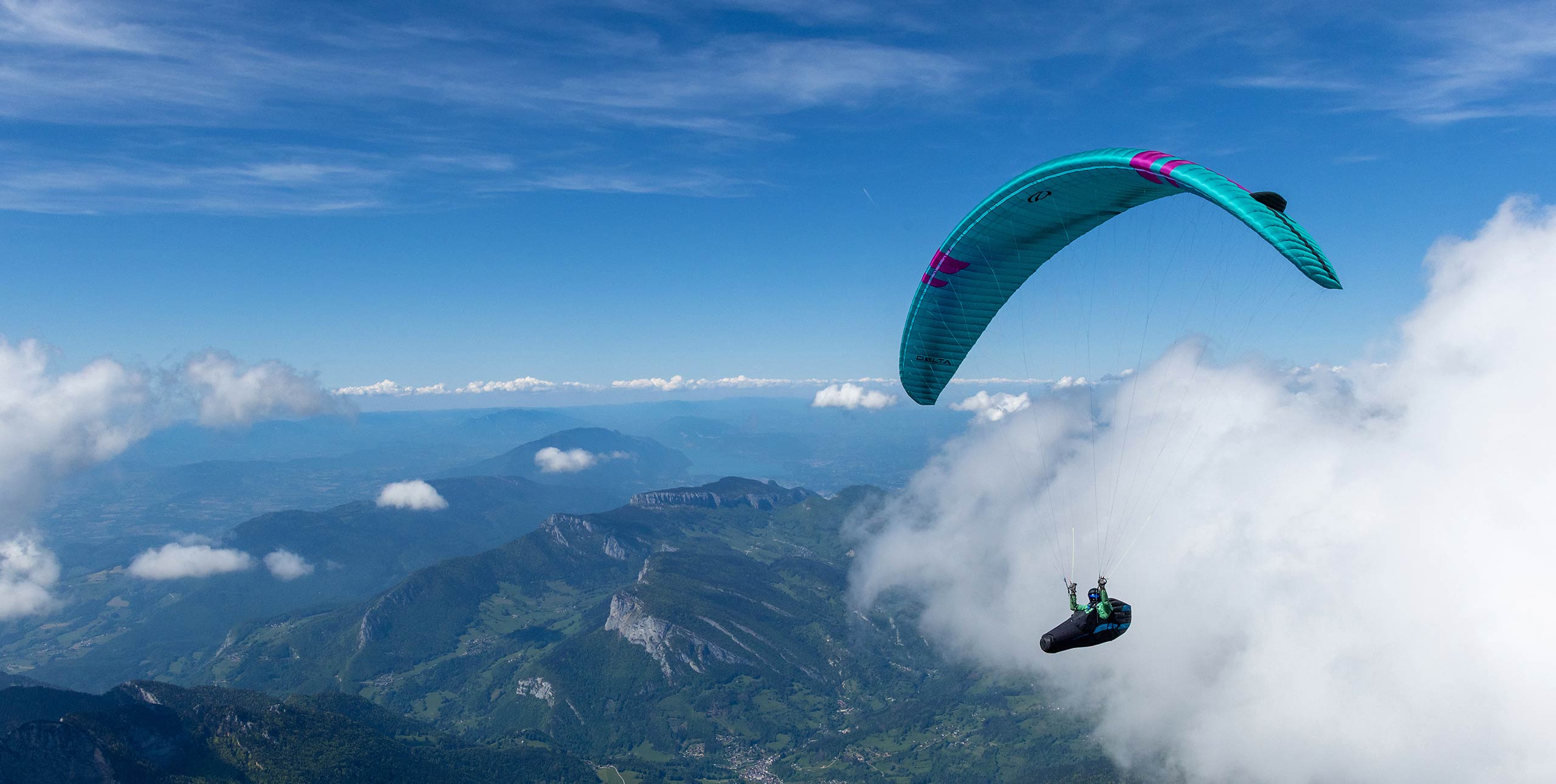
Jeff Hamann flew the Caribbean coastline of Yucatan, and found it involved landing in a lot of small spaces. We asked five PPG experts for their top tips for landing in tight spots.
Alex Mateos, Paramotor World Champion
Aereology. “Take a good look at the field before you land in it, and get a sense of how the wind might be blowing through it. This presupposes that you’re coming in under power, and if that’s the case the first tip is try to find somewhere bigger to land. Factor in how the wind gradient means you’ll have less headwind the lower you get, and if you’re dropping below a treeline or into a wind shadow it will send you sailing forward even further.”
Jeff Goin, The PPG Bible
Watch your tips. “Tight spaces sometime require different landing patterns. Fly your approach as standard as possible but realise that odd field shapes can dictate odd patterns. Plan it into the wind and away from rotor as much as possible. This might mean you have to hug the edge of the field, but don’t get too close to any trees – hitting a tree up high is far worse than flying through turbulence low down. Snagging a wingtip on a tree is a surprisingly easy, and dangerous, mistake to make.”
Karen Skinner, Competition pilot and world record holder
Practise pinpoint accuracy. “I always like to fix a point when coming in to land, even if it’s a big field. But in a small field it’s even more important to keep focused on your landing point and not just aim to land in a vague area. It helps you keep a disciplined and precise positioning on approach. Use object fixation to your advantage. It’s a good idea to practise spot landings as often as you can at your local field. Put an object on the ground before you take off and see how well you do at landing back at the spot.”
Emilia Plak, test pilot and competition pilot
Possibilities and limitations. “First you need to know exactly your wing and its limitations. Then your approach is key. Consider where you are and what you are flying. A tight landing at high-altitude in still air will need a different approach to one at sea-level in a seabreeze. An approach with a fast, small wing will be different to one with a large, high performance wing. Over-fly your landing spot several times and don’t worry if you have to fly away to come back round. Be very careful of electricity pylons and cables – small clearings are often there because of exactly that.”
Ant Green, world record holder and vol-bivouac pilot
Approach high and slowly. “Always touchdown upwind and use as much brake as you can without stalling. Remember, landing on the cage is better than breaking your back, and trees are better than moving water. Also remember you can always lose height and never gain height. Most of being able to land in small places is how well you can reduce your glide angle without stalling the glider – SIV, dune soaring, top-landing practise all help. I like to approach really high and slowly lose height as I get closer, making sure no turbulence will make me drop below my glide. Brake consistently or flap to reduce your glide to get to your target. Don’t be scared to land slightly crosswind if needed – use more flare and a bit of brake bias to turn into wind as you land.”
First published in issue 175 (November 2016)











